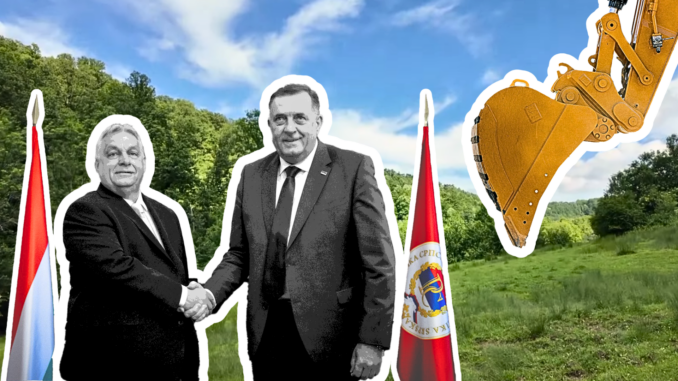
In the second half of last year, local media widely reported about the lithium fever in Serbia that has reached Bosnia, where massive lithium deposits have been identified in Republika Srpska.
The economic dimension of the progressively tighter diplomatic relations between the governments of the Republika Srpska (RS) and Hungary has become increasingly apparent recently. Consequently, Hungarian investors may become involved in several energy projects in the territory of the Republika Srpska, including the Trebinje solar power plant, the wind power plant in Hrgud, and the wastewater treatment plant in Gradiška.
In addition to the above-mentioned, the possibility of a new investment has also emerged that would rely on Hungary’s existing position in battery production and, simultaneously, could completely reshape the region’s current geoeconomic balance of power.
The Approval of Lithium Extraction Slipped Under the Radar
While everyone focused on the highly emotional vote on the declaration on the International Day of Reflection and Commemoration of the Srebrenica massacre, the Assembly of the RS in Banja Luka quietly rejected a citizens’ initiative that could have prevented the extraction of raw materials, especially lithium, found in the region.
The motion, including the call for help of the inhabitants of the ecologically threatened Mount Majevica, was submitted to the RS Parliament by Rado Savic, mayor of the Lopare Municipality, after a demonstration against mining in Lopare in February. The motion included a petition signed by 3711 local citizens and hundreds of intellectuals.
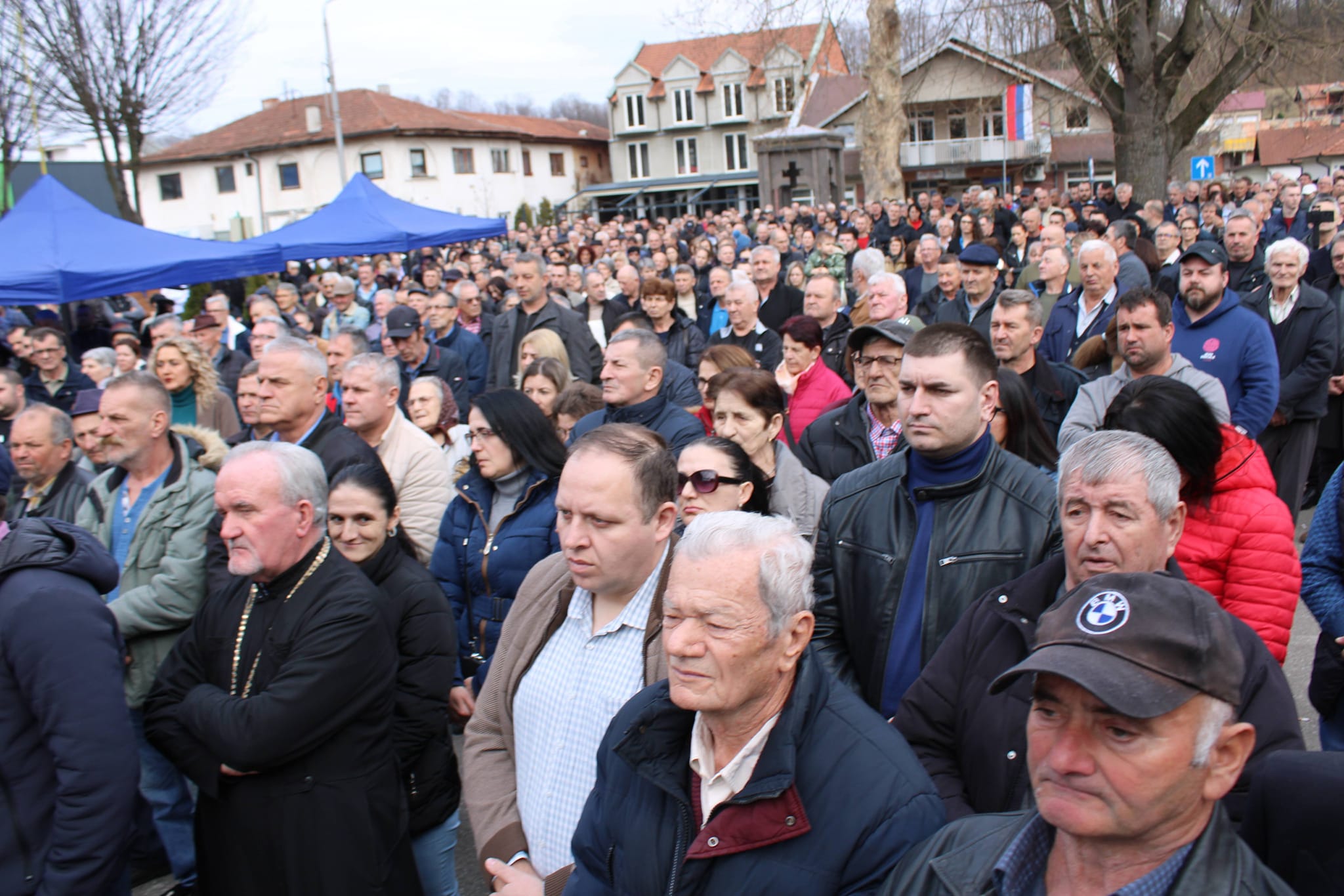
The self-government of Lopare held a public debate in December 2023, which resulted in the adoption of a Clause, stating that Lopare Municipality is against the mining and extraction of lithium on the municipality’s territory. Furthermore, they object to the proposed amendment of the Law on Geological Exploration, that the consent of local municipalities would not be needed for the approval of exploration permits.
The motion was put to a vote on 23 May, but only the opposition supported it, while members of the governing coalition pressed neither the „no” nor „abstain” buttons, although the voting was repeated. Out of the 64 members present, only 21 votes were cast, so there was no quorum, and the declaration was not adopted.
Thereby the representative body has given the green light to lithium mining.
Europe’s White Gold in the Dinaric Mountains
Lopare Municipality is located in the north-eastern part of Bosnia and Herzegovina, on the territory of Republika Srpska. Lopare selo (i. e. village Lopare) belongs to the municipality and is situated on the slopes of Mount Majevica. Majevica is part of the Dinaric Mountains, more specifically the so-called pre-Dinaric mountain range.
This surface elevation was formed earlier than the Dinaric Mountains.
In the same Pre-Dinaric area, extending south-eastwards towards the Serbian side of the border, is Mount Iverak, with the Jadar Valley stretching beneath its south-western slopes. There are also significant lithium reserves in this area, and Jadar may sound familiar because the British-Australian company Rio Tinto has started a lithium mining project in Gornje Nedeljice, situated in the valley. It seemed for a while that the opening of this mine had been halted due to the citizens’ indignation, but now, after the Serbian elections in June, it has become a topical issue again.
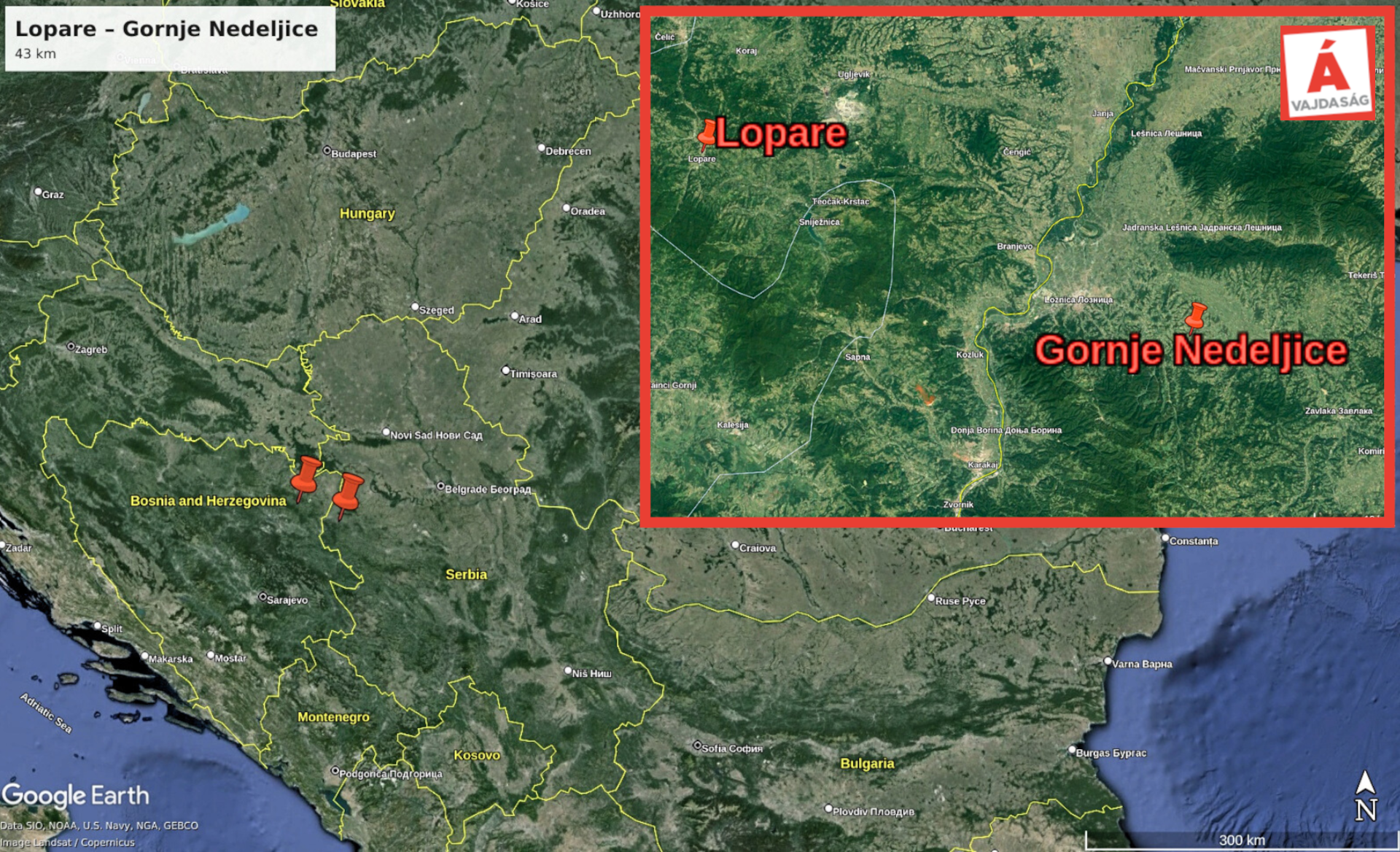
The Lopare region has also been exoplored earlier and the latest one was the third attempt. This time, the geological exploration of the mineral deposits was carried out by a Swiss company, Arcore AG. The company published the results of the exploration in November 2023, confirming that Lopare region in the Republika Srpska, Bosnia and Herzegovina:
„contains significant amounts of lithium carbonate, magnesium, potassium and boron”.
They also stressed that this is a „huge potential for greater import independence and supply of critical raw materials throughout Europe over several decades”. According to the study, environmentally and socially responsible mining could start by the end of 2026 and would be implemented over the next 50 years.
Lithium is primarily used in the production of batteries. It is the basic raw material for the production of mobile phones, laptops, electric cars and energy storage devices and, lately, that lead to the revaluation of natural resource stocks.
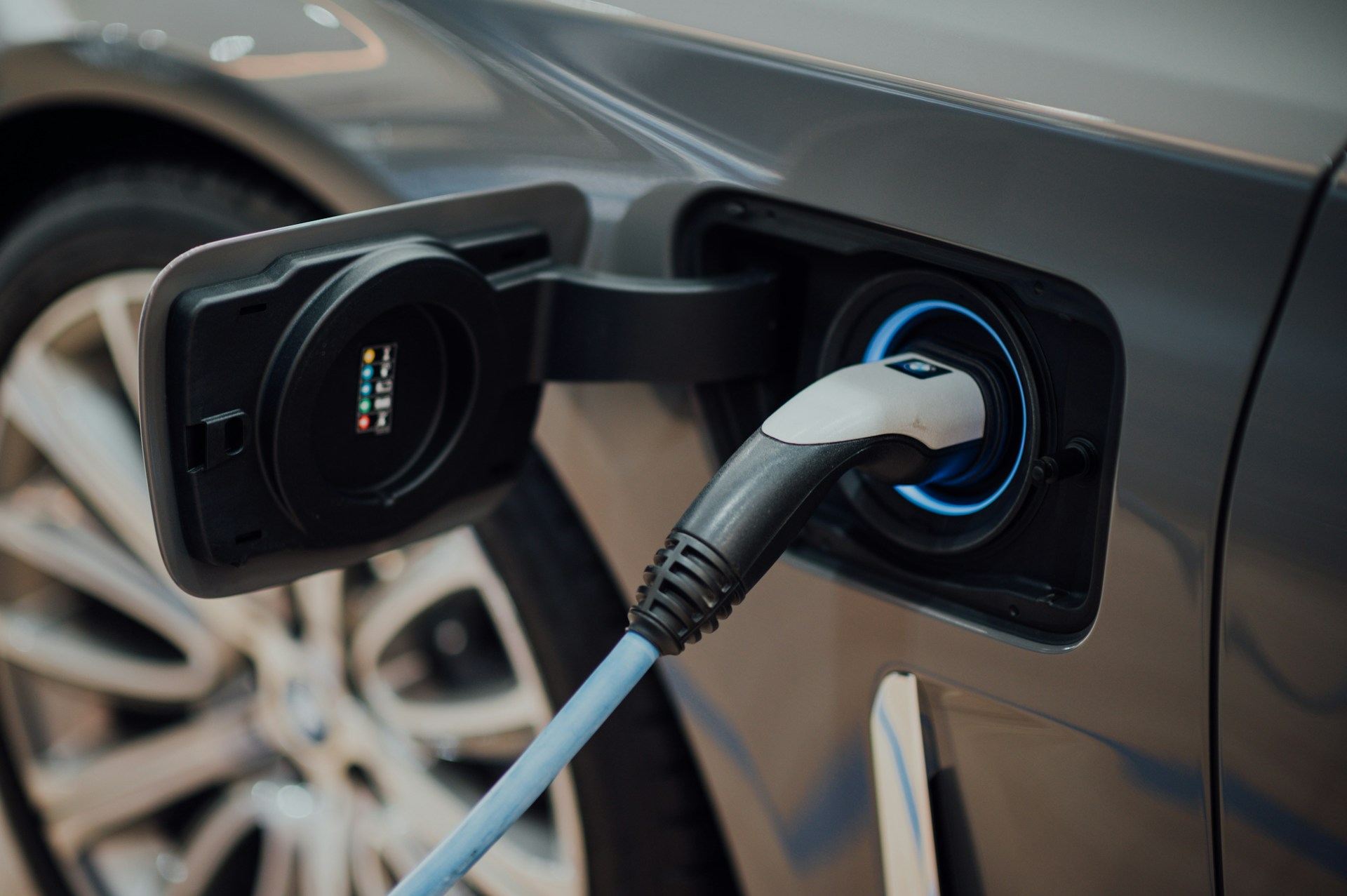
The European Union wishes to supply 80% of Europe’s lithium demand from European sources by 2025. Hence, it tackles this issue in its communication on Critical Raw Materials Resilience: Charting a Path Towards Greater Security and Sustainability:
„For electric vehicle batteries and energy storage, the EU would need up to 18 times more lithium and 5 times more cobalt in 2030, and almost 60 times more lithium and 15 times more cobalt in 2050, compared to the current supply to the whole EU economy. If not addressed, this increase in demand may lead to supply issues.”
Therefore, lithium is on the 2020 EU Critical Raw Materials List.
More than 1,286 billion tons of metal ores were found in Lopare:
– 1,5 million tonnes of lithium carbonate (LCE);
– 14 million tonnes of boric acid (B2O3);
– 35 million tonnes of potassium (KCI);
– 94 million tonnes of magnesium sulphate (MgSO4);
– and another 2,2 billion tonnes of other ores requiring further drilling to define their exact composition.
According to the president of the RS, Milorad Dodik, based on calculations made on knowledge at disposal, the value of these mineral ores is 15 billion euros.

Why is Lithium Mining Risky?
According to the Hungarian National Battery Industry Strategy 2030, there are – as far as we know today – two methods of mining lithium: from rocks and from lithium-rich geothermal deposits. „Greenhouse gas emissions from mining are 15 tons per 1 ton of lithium extracted, whereas geothermal extraction has practically no greenhouse gas emissions. The industrial water demand of mining is 50 times higher than the value of geothermal extraction.” (National Battery Industry Strategy 2030, p.3)
As Rado Savić, the mayor of Lopare emphasized in the declaration submitted to the Parliament of the RS:
„No expert has ever said that lithium mining is safe for the natural environment and the health of the people living there.”

The repository of raw materials is in the immediate vicinity of the River Gnjica watershed, so it could pollute the river. Given that the river flows into River Sava, the pollution of regional water is possible. Groundwater and atmospheric waters of the region also infiltrate in River Janja, which flows into River Drina.
Consequently, it may jeopardize the watersheds of both rivers, i. e. Sava and Drina.
In this context, there are no guarantees that potable water reserves will remain intact.
Hungary as a Potential Partner in Lithium Mining
A couple of highly relevant meetings between the governments of the RS and Hungary were held this spring. Hungarian PM, Viktor Orbán visited the capital of the RS, Banja Luka on April 4, where he was presented a state award on April 5, and, the next day, he attended an economic forum in the company of Péter Szijjártó, Minister of Foreign Affairs and Trade, and the representatives of 23 Hungarian companies with export potential.

The meeting was announced by the RS state media as a guarantee – despite pressure from Europe – of the political and economic support to RS by the Hungarian government.
In an interview, Radovan Višković, Prime Minister of the RS, said that Hungary could offer investment opportunities in the energy, agriculture and tourism sectors. He also highlighted another important area, since Hungary has developed strong relations with China in car manufacturing, especially in the production of electric car components:
„This means, that in the period ahead, with our Hungarian partners, we will be able to valorise all the natural resources that can be found in the territory of Republika Srpska.”
– said the Bosnian Serb PM.
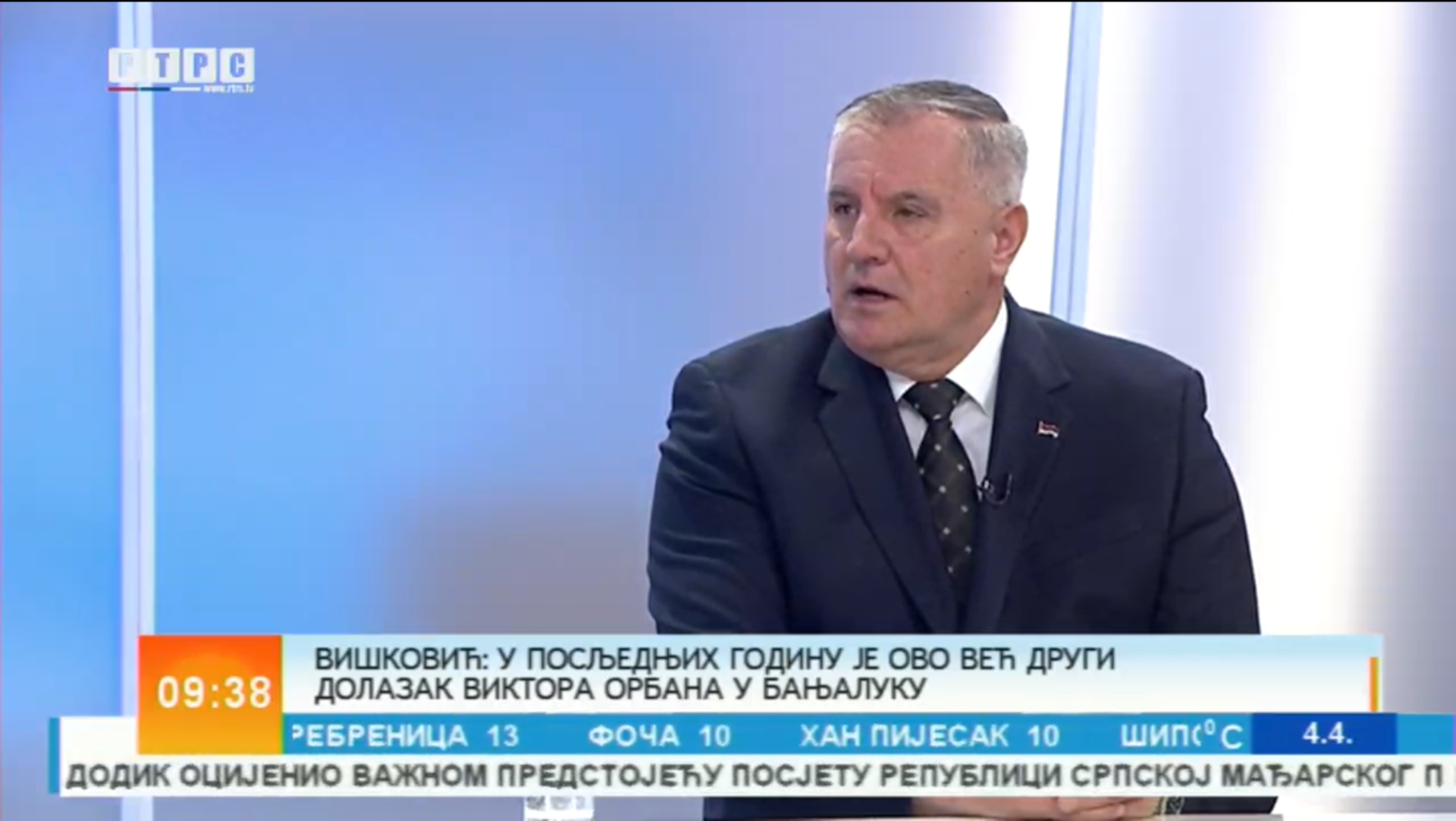
Hungary Considers Battery Production as an Industry of Strategic Importance
According to Hungary’s National Battery Industry Strategy 2030: „Hungary may have lithium-rich geothermal deposits, thus, in the future, it may be able to meet at least domestic demand and play a role in the production of quality raw materials suitable for battery production”.
Currently, three battery factories are operating in Hungary, and the government plans to invest in several new projects in the battery industry.
As stated by the Hungarian Minister of National Economy, Márton Nagy, „High-tech battery production could bring more than 6 300 billion forints of development to Hungary in the coming years, making Hungary the world’s 4th largest power in battery industry after China, the United States, and Germany. The country’s production capacity could reach 250 gigawatt-hours, which could meet 35 percent of the European demand.”
Access to 1,5 million tonnes of lithium found in the RS may bring Hungary a significant competitive advantage on the market nonetheless.
No details are available on the role of Hungary in this project. The Concession Committee of Republika Srpska has not announced a tender for lithium production yet.
Cover image: Orbán Viktor / Facebook (Montage by: Átlátszó Vajdaság)
Text: Virág Gyurkovics
Multimedia: Andrea Dancsó
The article was originally published in Hungarian on 27. 06. 2024.
